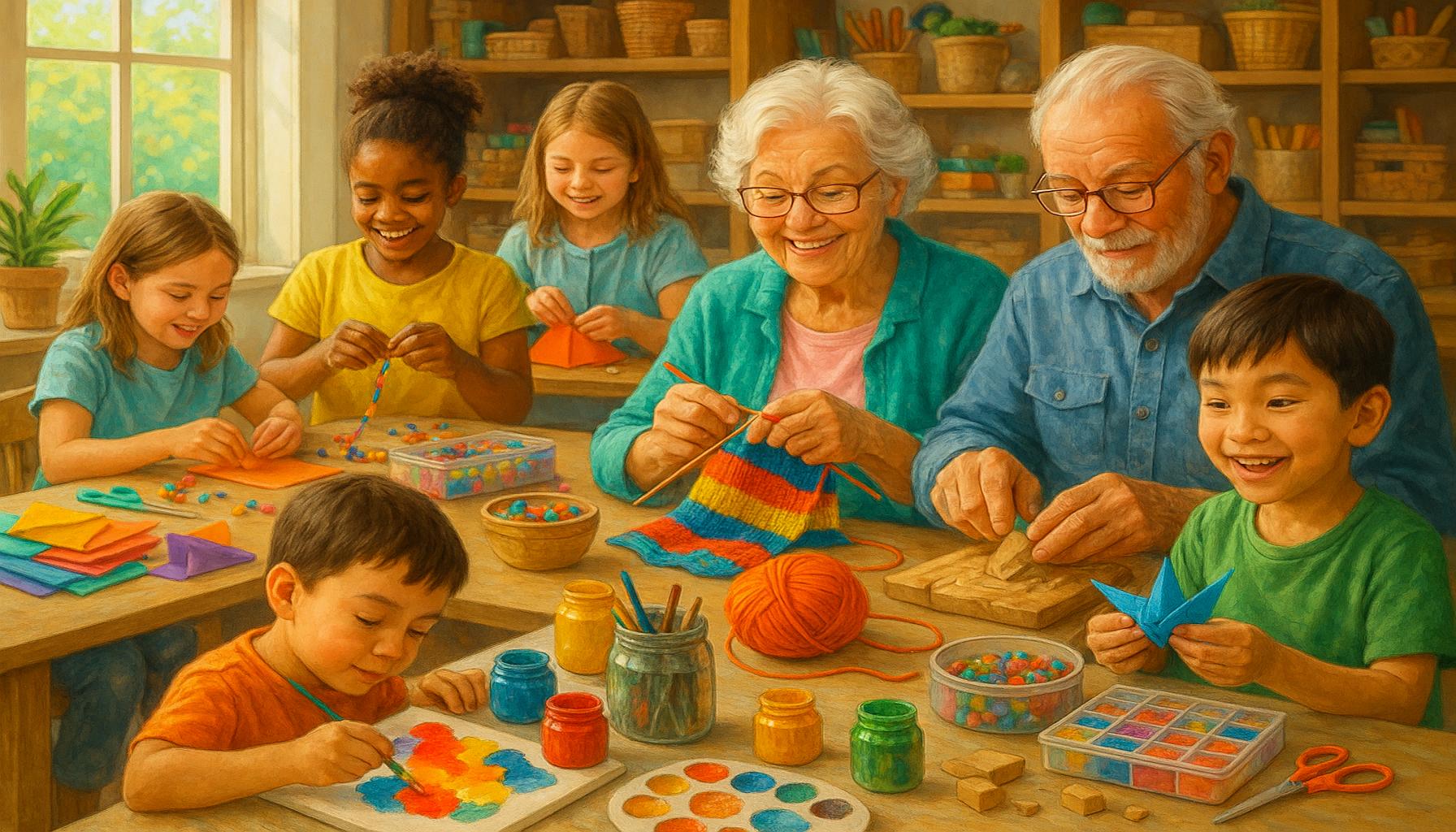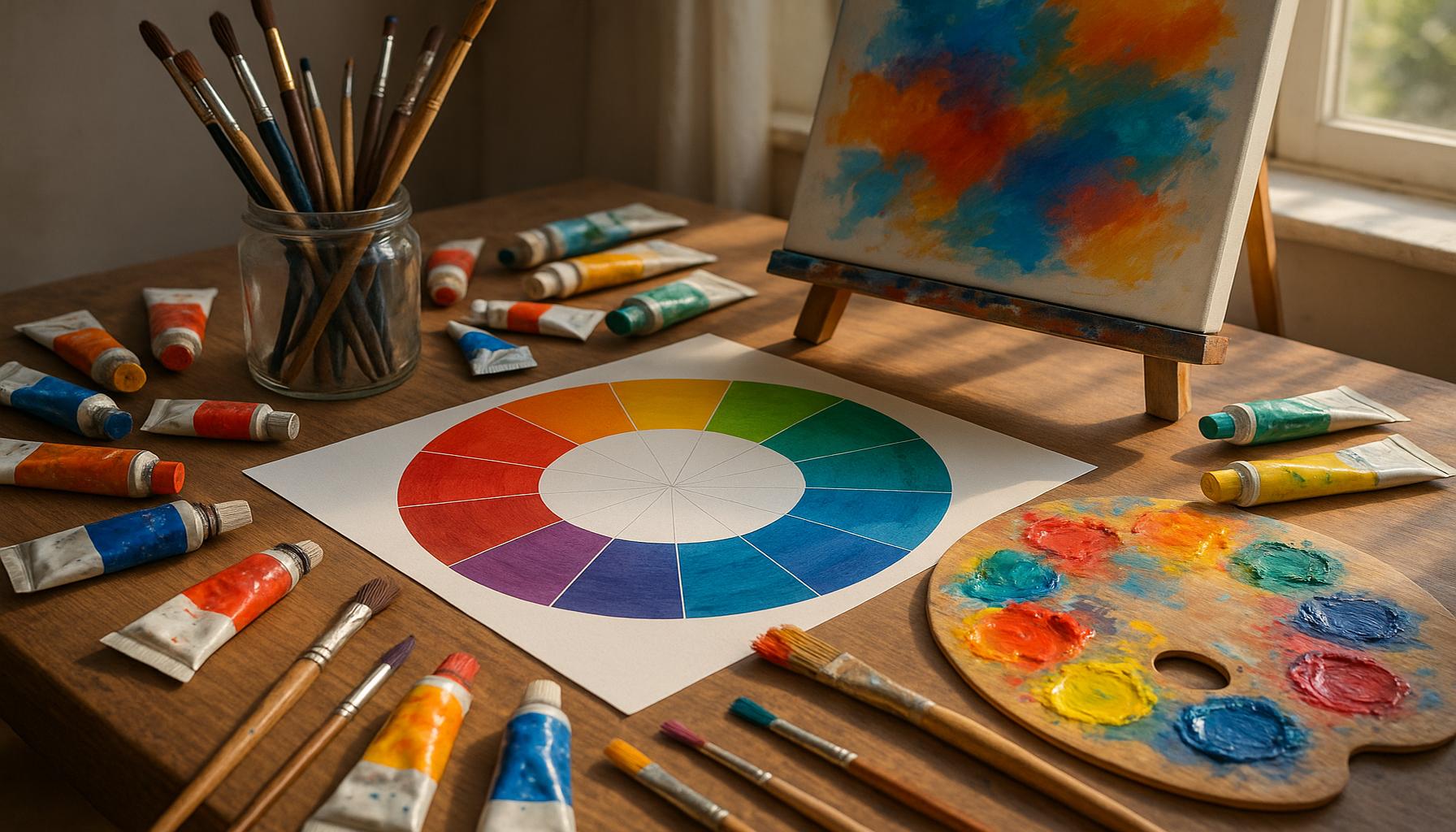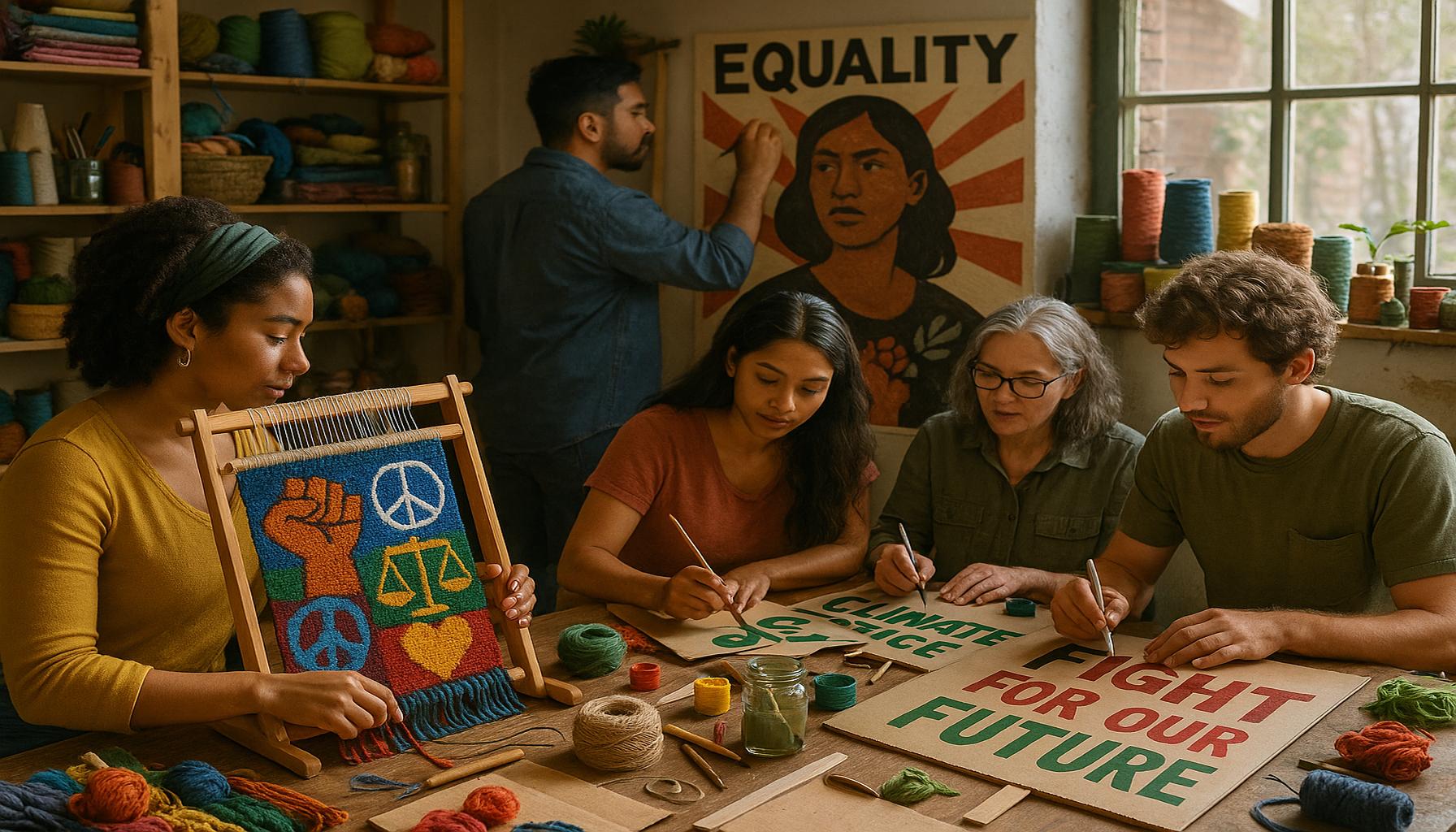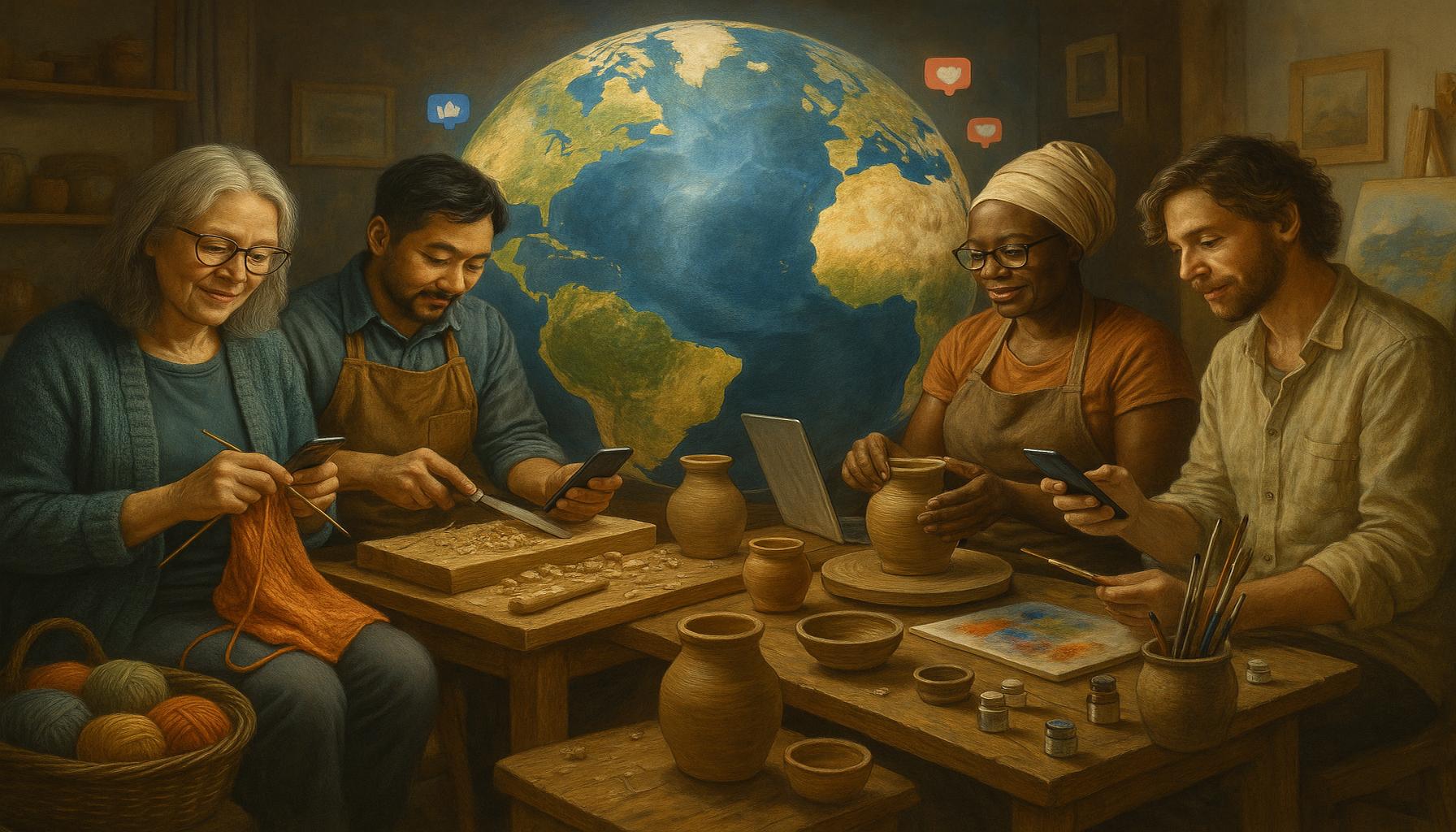Crafting for All Ages: Encouraging Creativity in Children and Seniors Alike

The Impact of Crafting on Creativity and Well-being
In a world increasingly dominated by technology, crafting provides a unique avenue for creativity that appeals to all ages. From toddlers grasping their first crayons to seniors mastering intricate knitting patterns, the joy of creating something from scratch connects generations in a profound way.
Crafting is not just an activity; it’s a transformative experience that offers numerous benefits. Engaging in crafts stimulates the imagination, allowing both children and seniors to express their unique ideas. Activities like painting and sculpting, for instance, enable individuals to translate their visions into tangible objects. Consider a young girl who paints a mural to depict her family’s garden—this not only reflects her perspective but also enhances her understanding of color and shape.
Furthermore, crafting contributes significantly to improved motor skills. Activities that involve cutting, gluing, or threading help strengthen fine motor coordination—a vital skill for children learning to write and for seniors aiming to maintain dexterity. A simple DIY project, like assembling a birdhouse, can enhance hand-eye coordination while also providing a sense of accomplishment once the final product is completed.
Social connections are another essential aspect of crafting. Participating in crafting workshops or communal projects fosters community and friendships among participants. In many local communities across the United States, crafting circles or quilting bees serve not only as platforms for creativity but also as social hubs where people share stories and experiences. For example, the tradition of quilting can bring diverse individuals together, creating intergenerational bonds and fostering a sense of belonging.
Moreover, crafting yields therapeutic effects. For seniors, creating arts and crafts can combat loneliness and promote mental well-being. Engaging in hands-on projects may help alleviate symptoms of anxiety and depression. For children, crafting offers a constructive outlet for energy, allowing them to channel their emotions and develop self-confidence through their creations.
As it stands, crafting may appear simple; however, it holds the potential to bridge generational gaps. By encouraging creativity in a collaborative environment, families can embark on shared artistic journeys that deepen their connections. For example, a family project like creating a seasonal wreath or holiday ornaments allows members from different generations to contribute their ideas and skills, resulting in a cherished family heirloom.
Whether it’s a simple paper mache project or a complex quilting pattern, the opportunities for crafting are endless. Even beginner-friendly resources, such as online tutorials or community centers offering classes, can inspire novices to dive into projects they might not have previously considered. Embracing these creative outlets can enrich lives, cultivate new skills, and inspire joy across every age group, fostering a vibrant community of makers.
DISCOVER MORE: Click here to delve into the world of artisan baking
Exploring Crafting Activities for Different Age Groups
Crafting encompasses a diverse range of activities that cater to various interests and skill levels, making it accessible for both children and seniors. Understanding the specific crafting activities that resonate with each age group can help unlock their creative potential.
Crafting for Children
For children, crafting is often synonymous with play. Young children are naturally drawn to vibrant colors and different textures, making activities like finger painting, collage making, and clay modeling perfect avenues for self-expression. These activities not only ignite their creativity but also enhance cognitive skills. For example, children learn about shapes, colors, and spatial relationships as they cut, paste, and mold materials into their imaginative designs.
- Finger Painting: Promotes sensory exploration and lets children express themselves freely.
- Building with Blocks: Encourages problem-solving and fosters their understanding of structural concepts.
- Nature Crafts: Involves collecting leaves or stones to create art, connecting them with the outdoors.
In addition to enhancing their imagination, crafting activities such as these also build fine motor skills. Activities that require children to cut shapes or thread beads can improve their dexterity, laying a strong foundation for future skills like writing or playing musical instruments.
Crafting for Seniors
For seniors, crafting serves as both a pastime and a therapeutic outlet. Engaging in crafting can significantly improve mental wellness and help mitigate age-related issues such as loneliness or depression. Popular crafting choices among seniors include knitting, painting, and scrapbooking. These projects not only challenge the mind but also harness nostalgic feelings, as many seniors fondly recall crafting from their younger days.
- Knitting and Crocheting: These activities promote mindfulness and can reduce stress while also enhancing hand coordination.
- Painting and Drawing: Allows seniors to express their emotions and experiences, facilitating meaningful reflection.
- Woodworking: A hands-on project that offers satisfaction and can lead to the creation of beautiful home decor items.
Moreover, research supports the notion that crafting can improve brain health. According to a study published by the Journal of Neuropsychiatry, engaging in creative activities may reduce the risk of cognitive decline in seniors. Consequently, fostering an environment where both children and seniors craft can promote mental engagement and socialization.
Ultimately, the bridge between generations lies in crafting. By participating in these activities together—be it children showing their grandparents how to make friendship bracelets or seniors sharing their knowledge of quilting—an invaluable exchange of ideas and experiences occurs. The simplicity of crafting can cultivate strong familial bonds while nurturing creativity across ages.
Crafting is not only a delightful pastime but also a powerful tool for enhancing creativity and building connections across generations. The theme “Crafting for All Ages” encapsulates the essence of this intergenerational engagement, showcasing how artistic endeavors foster creativity in both children and seniors.When children engage in crafting, they develop essential skills such as fine motor abilities, problem-solving strategies, and self-expression. Activities like painting, drawing, or modeling with clay ignite their imagination and enable them to explore the world around them in a tactile and visual manner. Moreover, craft projects often promote critical thinking as children learn to follow instructions, experiment with colors, and understand spatial relationships.For seniors, the benefits of crafting extend beyond mere recreation. Engaging in arts and crafts can enhance cognitive functioning and provide a meaningful outlet for emotions. As seniors create art, they often experience improved hand-eye coordination and fine motor skills, which can counteract some of the physical challenges that come with aging. Additionally, crafting offers an opportunity for socialization, allowing seniors to gather in groups and share techniques, projects, and life stories, thus strengthening community bonds.A remarkable aspect of crafting is its ability to bridge generational gaps. By involving grandparents and grandchildren in joint creative projects, families cultivate shared experiences that can lead to deeper emotional connections. These joint activities encourage communication and teamwork, allowing both age groups to learn from one another’s perspectives and skill sets.If you’re curious about crafts specifically tailored for different age groups, exploring online resources or local community centers can unveil a wealth of ideas. From simple DIY projects to more complex art classes, the possibilities are endless. Engaging in crafting together can not only produce beautiful creations but also unforgettable memories, emphasizing that creativity is a lifelong journey that anyone can embark on, regardless of age.Consider embracing this rewarding theme and discovering the vast benefits it offers for people of all ages. As you dive into the world of crafting, you will undoubtedly spark your creativity and inspire those around you.
LEARN MORE: Click here to discover watercolor techniques
Cultivating Creativity Through Intergenerational Crafting
The act of crafting transcends age barriers, offering opportunities for intergenerational bonding and fostering creativity in both children and seniors. When families engage in crafting together, not only do they create art, but they also build lasting memories and understand each other’s perspectives.
Benefits of Intergenerational Crafting
Collaborative crafting projects allow children and seniors to work towards common goals, enhancing their social interactions and strengthening relationships. These shared experiences can lead to improvements in communication skills and promote a sense of belonging. Specific benefits of intergenerational crafting include:
- Enhanced Communication: Crafting together initiates conversations that may not happen during regular family interactions, fostering deeper connections.
- Sharing Knowledge: Seniors can share their skills in traditional crafts, while children can introduce new trends, leading to a rich exchange of ideas.
- Improved Mental Health: The social interaction involved in joint crafting can alleviate feelings of loneliness in seniors and provide children with a sense of purpose.
Research indicates that crafting can promote emotional well-being across age groups. For instance, a study from the University of Colorado found that engaging in creative activities can release endorphins, reducing stress levels and boosting mood. Such shared experiences are not merely fulfilling; they also serve as emotional glue that nurtures family dynamics and collective creativity.
Crafting Events and Community Classes
To encourage intergenerational crafting, communities across the United States are organizing events that invite families to participate in crafting workshops. Public libraries, community centers, and art studios have begun offering programs tailored for both children and seniors. These classes often feature popular crafting forms such as collaborative mural painting, pottery making, and seasonal decoration crafting.
- Collaborative Community Murals: These public art initiatives welcome families to work together, allowing participants to express their community’s identity while fostering teamwork.
- Pottery Classes: Working with clay can be especially therapeutic for seniors while allowing kids to explore textures and shapes, presenting endless possibilities.
- Seasonal Decoration Workshops: These events encourage families to craft items for holidays, helping participants celebrate traditions while creating unique decor together.
Such community initiatives are not only about crafting; they also bring together various age groups, bridging generational divides, and creating environments where everyone feels valued. The transformative power of crafting allows generations to learn from each other, creating a tapestry of shared experiences and traditions.
Accessibility and Adaptations in Crafting
One significant consideration when planning these intergenerational crafts is accessibility. Programs designed specifically for mixed-age groups ensure that activities can be adjusted to cater to different abilities and interests. For instance, using adaptive tools such as ergonomic scissors for seniors or larger, more manageable materials for young children can make crafting inclusive.
Additionally, offering diverse crafting options—ranging from beading to garden crafts—can ensure that participants can choose activities that resonate with their preferences. Being adaptable in crafting can unlock creativity in unexpected ways, making it a truly enriching experience for all ages.
DIVE DEEPER: Click here to learn more
Embracing the Art of Crafting Across Generations
In conclusion, the journey of crafting for all ages offers invaluable opportunities to enrich the lives of both children and seniors. As we have seen, intergenerational crafting not only bridges age divides but also cultivates vital skills such as communication, creativity, and mutual respect. Engaging in creative activities together fosters a sense of belonging and strengthens family ties, paving the way for deeper emotional connections.
Moreover, community initiatives—ranging from workshops to public art projects—play a crucial role in promoting a vibrant culture of collaboration. By creating inclusive environments, these programs empower individuals of all ages to express their creativity and share their unique talents. With accessible tools and diverse crafting options, everyone can partake in the joy and therapeutic benefits of making art.
As we advocate for crafting as a universal activity, we encourage families and communities to embrace this artistic outlet. The simple act of creating can lead to lasting relationships, joyful memories, and a broader understanding of each other’s experiences. Ultimately, fostering an atmosphere where creativity thrives across generations not only enriches lives but also contributes to a more connected and harmonious society.
So gather your family, pick up those crafting supplies, and embark on a shared journey of imagination and creativity—because the joy of crafting knows no age limit.


